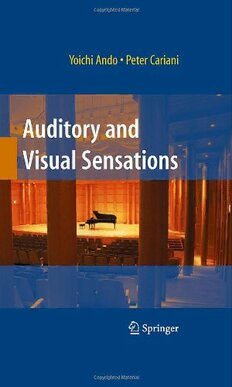
Auditory and Visual Sensations PDF
357 Pages·2010·12.262 MB·English
Most books are stored in the elastic cloud where traffic is expensive. For this reason, we have a limit on daily download.
Preview Auditory and Visual Sensations
Description:
Professor Yoichi Ando, acoustic architectural designer of the Kirishima International Concert Hall in Japan, presents a comprehensive rational-scientific approach to designing performance spaces. His theory is based on systematic psychoacoustical observations of spatial hearing and listener preferences, whose neuronal correlates are observed in the neurophysiology of the human brain. A correlation-based model of neuronal signal processing in the central auditory system is proposed in which temporal sensations (pitch, timbre, loudness, duration) are represented by an internal autocorrelation representation, and spatial sensations (sound location, size, diffuseness related to envelopment) are represented by an internal interaural crosscorrelation function. Together these two internal central auditory representations account for the basic auditory qualities that are relevant for listening to music and speech in indoor performance spaces. Observed psychological and neurophysiological commonalities between auditory and visual sensations and preference patterns are presented and discussed. This book thus spans the disciplines of physics, acoustics, psychology, neurophysiology, and music production, thereby blending science, engineering, and art.
See more
The list of books you might like
Most books are stored in the elastic cloud where traffic is expensive. For this reason, we have a limit on daily download.
